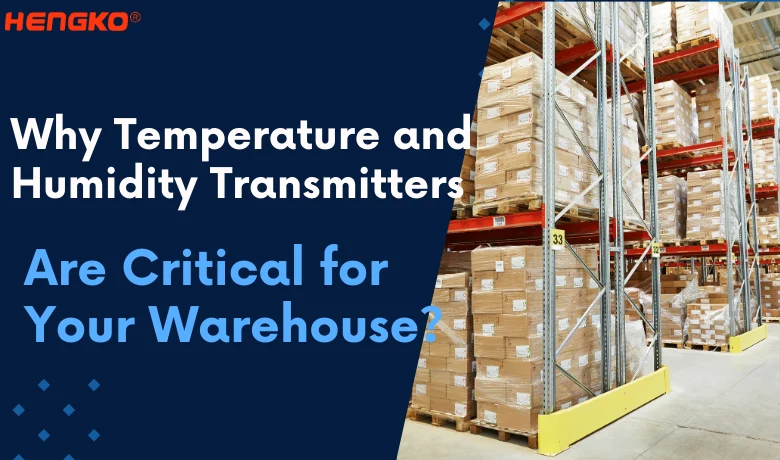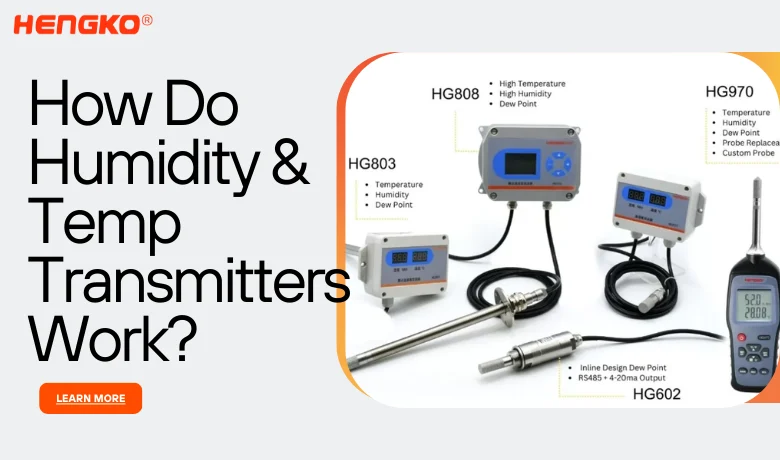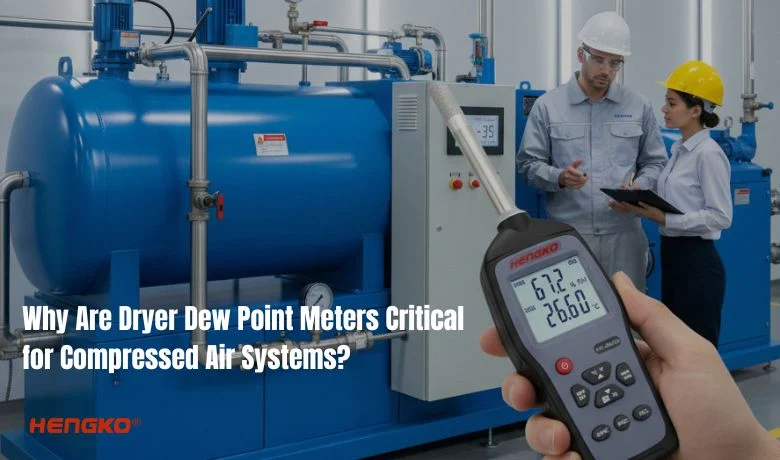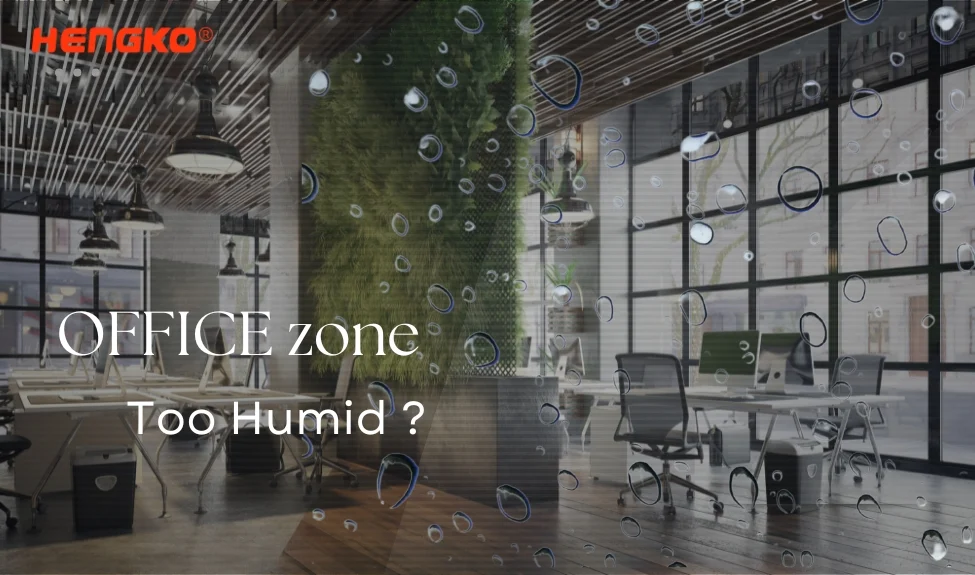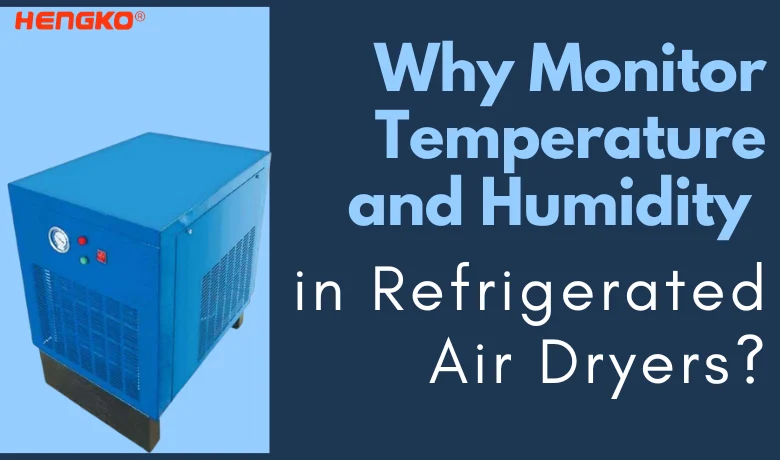Efficient warehousing and storage are critical components in supply chain management. For businesses that handle sensitive products—ranging from pharmaceuticals and food to electronics and chemicals—maintaining the right environmental conditions is not just important, it’s essential.
This is where temperature and humidity transmitters come in, offering a reliable and accurate way to monitor and control the storage environment.
Why Temperature and Humidity Transmitters Are Critical for Your Warehouse
Temperature and humidity control in a warehouse is essential to protect your inventory, equipment, and overall operations. Temperature and humidity transmitters provide real-time monitoring, ensuring that your warehouse environment stays within optimal conditions. These devices help prevent damage to sensitive goods, maintain product quality, and improve energy efficiency. By investing in reliable transmitters, you can safeguard your assets, reduce operational costs, and stay compliant with industry standards.
Why Temperature and Humidity Matter in Warehousing
The conditions inside your warehouse can significantly affect the quality, safety, and longevity of the products you store. Improper storage environments can lead to spoilage, product degradation, and even safety hazards. For example:
●Pharmaceuticals: Many drugs, especially vaccines and biologics, need to be stored within specific temperature and humidity ranges to remain effective.
●Food: Fresh produce, dairy, and other perishable items require precise monitoring to prevent spoilage.
●Electronics: Excessive humidity can cause corrosion, while improper temperature can damage sensitive components.
How Temperature and Humidity Transmitters Enhance Storage Control
Temperature and humidity transmitters are designed to provide real-time data on the environmental conditions inside your warehouse or storage facility. These devices constantly measure and monitor temperature and humidity levels and relay this information to a central system. Here’s how they add value:
1. Accuracy and Reliability
Modern transmitters are highly accurate, with some capable of measuring temperature and humidity to fractions of a degree or percentage. This precision ensures that your products are stored under the optimal conditions.
2. Real-Time Monitoring and Alerts
By connecting transmitters to a central monitoring system, you can access real-time data and receive immediate alerts if conditions drift outside of the required range. For example, if the temperature rises above the safe threshold, the system can notify you, allowing quick action to prevent potential product damage.
3. Data Logging for Compliance
Temperature-sensitive industries like pharmaceuticals and food production are often subject to regulatory standards. Temperature and humidity transmitters help businesses maintain compliance by logging environmental data over time, making it easier to generate reports for audits or inspections.
4. Remote Monitoring
Many advanced transmitters offer wireless connectivity, allowing you to monitor conditions from anywhere. Whether you’re at a different facility or traveling, you can ensure that your storage conditions remain within the required parameters.
Applications in Different Industries
1. Pharmaceutical Warehouses
In the pharmaceutical industry, maintaining strict temperature and humidity control is a matter of safety and compliance. Transmitters help ensure that drugs and vaccines are stored under the right conditions, and they also provide traceable records that demonstrate compliance with industry regulations.
2. Food Storage
For the food industry, particularly perishable goods, temperature and humidity control are vital to extend shelf life and preserve quality. Transmitters can detect and adjust conditions as needed, preventing spoilage and reducing waste.
3. Chemical Storage
Chemicals often require specific environmental conditions to remain stable and safe. By using temperature and humidity transmitters, chemical storage facilities can avoid conditions that may lead to hazardous reactions, ensuring worker safety and product integrity.
4. Electronics and Sensitive Equipment
Humidity levels in storage areas can have a significant impact on the longevity of electronic components. Excessive moisture can lead to corrosion and damage to sensitive parts. Temperature and humidity transmitters help maintain the ideal environment for electronic equipment and parts.
Choosing the Right Temperature and Humidity Transmitter for Your Warehouse
When selecting a temperature and humidity transmitter for your warehouse or storage facility, several factors should be considered:
1.Measurement Range: Ensure the transmitter is capable of measuring within the temperature and humidity ranges required for your specific products.
2.Accuracy: Look for high-precision transmitters that can provide accurate data to minimize risks.
3.Integration: Choose a system that integrates well with your existing infrastructure, whether it’s a centralized management system or a cloud-based solution.
4.Compliance Features: For industries with strict regulations, look for transmitters that include features such as data logging, reporting, and alarm capabilities to ensure compliance.
Reliable Environmental Monitoring: HENGKO Temperature and Humidity Transmitters
HENGKO offers a range of high-precision temperature and humidity transmitters suitable for various industries, including pharmaceuticals, food storage, electronics, and more. Our products offer the following advantages:
●Wide Measurement Range: HENGKO high-precision temperature and humidity transmitters provide a temperature range of -40°C to +190°C and a humidity range of 0% to 100% RH (Recommend < 95% RH), making them versatile for a variety of environmental conditions.
●Exceptional Accuracy: Our transmitters are designed with advanced technology, ensuring high-accuracy measurements of ±0.1°C for temperature and ±2% RH for humidity. This minimizes the risks associated with environmental fluctuations and ensures product quality is maintained.
●Output Signal Compatibility: HENGKO transmitters provide industry-standard output signals for easy integration with data acquisition systems. Common outputs include:
-4-20 mA current loop: This widely used analog signal transmits data over long distances without
-Modbus RTU: This digital communication protocol enables two-way communication between the transmitter and a control system.
●Calibration Capabilities:
Many high-temperature and humidity transmitters offer calibration options to ensure long-term accuracy. This may involve:
-Remote calibration: Calibration can be performed without removing the sensor from the process, minimizing downtime.
-User-selectable calibration points: The user can choose specific temperature and humidity points for calibration to match the application’s requirements.
Ready to ensure optimal environmental control and safeguard your products? Explore HENGKO’s high-precision temperature and humidity transmitters today. Whether you’re in pharmaceuticals, food storage, or electronics, our solutions are designed to provide accuracy, reliability, and seamless integration. Contact us now at sales@hengkometer.com to learn more and find the perfect transmitter for your needs!
Conclusion
In today’s fast-paced and regulated environment, temperature and humidity transmitters have become indispensable in warehousing and storage operations. By offering precise monitoring, real-time data, and enhanced control, they help businesses mitigate risks, maintain product quality, and comply with regulations. Investing in high-quality transmitters ensures that your products remain in optimal condition throughout their storage lifecycle, making them a vital tool for any warehouse manager or supply chain professional.

